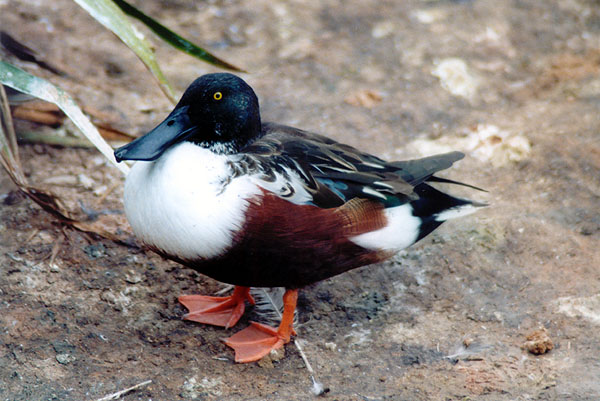
Date: 2001-11-01
Lens: Tamron 200-400mm F5.6 + 1.4x Converter

 Northern Shoveler
Anas clypeata
Northern Shoveler
Anas clypeata
 Description
DescriptionLike other dabbling ducks, this bird uses its large bill, which has comb-like teeth along the edges, to strain for aquatic plants, invertebrates, and seeds. Its tounge is used to pump out the water and catch food bits on the comb-like teeth. Large, shallow marshes provide the best place for this kind of feeding. Single ducks may swim in tight circles to create a whirlpool that brings food to the water surface. Un-like most ducks, this one keeps its bright mating plumage well into February.
General: 17 to 20 inches in length.
Male: Large, black, shovel shaped bill. Green head and neck. White chest, belly, and tail. Chestnut colored flanks and underbody with a white band on its hind flanks. Dark back. Pale blue upper secondary coverts. Yellow eye. Orange feet. Immature male looks similiar to adult female. Female: Large, "dirty" orange, shovel shaped bill. Mottled brown body and wings. Buff head, neck, and back. Dusky blue upper secondary coverts. Green speculum with white border. Brown eye. Orange feet.
Marshes (sometimes saltwater), and lagoons.
 Nesting
Nesting8-12 pale buff or greenish eggs with a 22-25 day incubation period. Fledging occurs 38-66 days after hatching. The nest is an open cup made from grass and lined with down. It is usually concealed in vegetation that is a good distance from water.